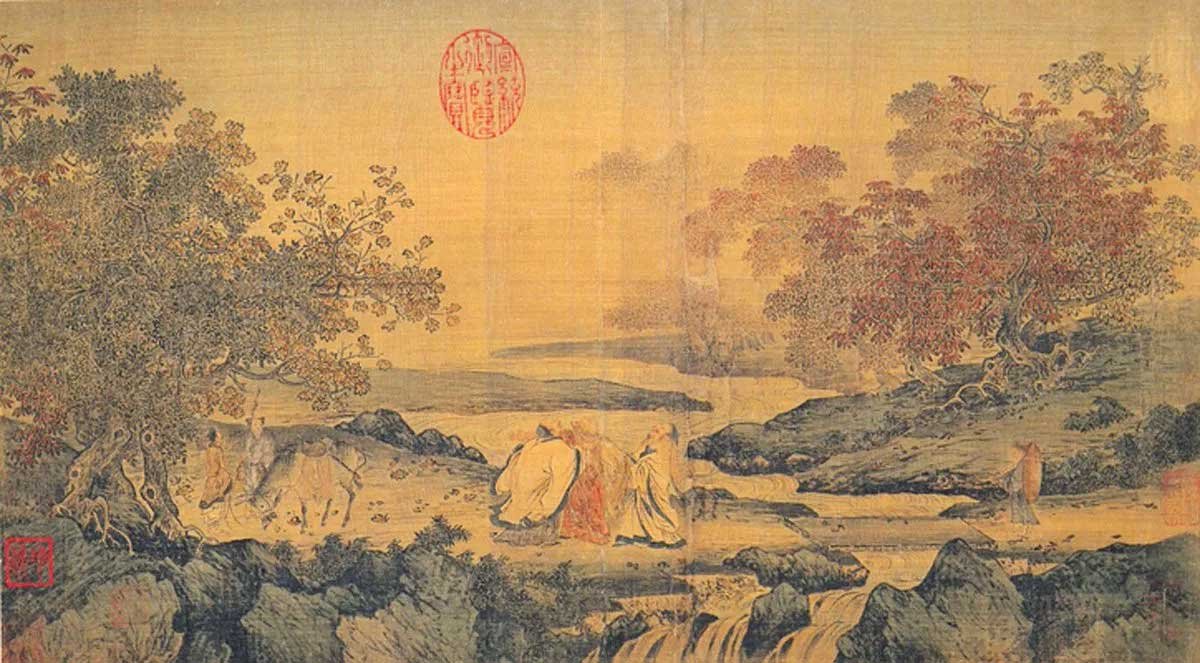Taoism, an ancient philosophy and religious tradition that emerged from China, presents a vast wealth of spiritual practices and cultural influences that has touched every aspect of Chinese life. In this episode, we delve deeper into the intricate aspects of Taoism such as the pursuit of immortality through inner alchemy, the wisdom of the I Ching, the harmonizing practices with nature, the significance of sacred sites and temples, and the contributions of Taoist art, poetry, ethics, medicine, and martial arts.
Exploration of Taoist inner alchemy and quest for immortality
Taoist inner alchemy is a complex system of spiritual cultivation aimed at achieving longevity and immortality1. It involves meditative and bodily practices designed to refine the practitioner’s qi or vital energy, transform the body and mind, and ultimately attain oneness with the Tao. The quest for immortality, whether physical or spiritual, has been a central theme in Taoist history, shaping much of its thought and practice.
Understanding the I Ching (Book of Changes)
The I Ching, or Book of Changes, is one of the oldest and most revered books in Chinese literature2. It is a divination text, a philosophical treatise, and a guide to ethical living. The I Ching employs a system of 64 hexagrams, combinations of broken and unbroken lines, that correspond to various states of change in the universe. Consultation of the I Ching is thought to provide insight into the patterns of change and the appropriate course of action in a given situation.
Taoist practices for harmonizing with nature
Harmonizing with nature is a fundamental Taoist practice, reflecting the philosophy’s emphasis on following the Tao, the natural way of the universe3. Taoists seek to align their lives with the rhythms of nature, the changing seasons, and the flow of qi. This is often achieved through practices such as qigong, a system of exercises that cultivate energy and balance, and feng shui, the art of arranging spaces in harmony with the natural environment.
Insight into Taoist sacred sites and temples
Taoism boasts a rich tradition of sacred sites and temples, many of them located in China’s stunning mountains4. These sites are often places of pilgrimage, meditation, and ritual, as well as repositories of Taoist art, culture, and history. Taoist temples, with their distinctive architecture and iconography, serve as focal points for the community, places of worship, and centers for the study and practice of Taoism.
Discussion on Taoist art and poetry
Taoist influence permeates much of Chinese art and poetry. Taoist art, whether in painting, sculpture, calligraphy, or other forms, often embodies the principles of balance, simplicity, and harmony with nature5. Taoist poetry, as found in works like the Tao Te Ching and the writings of Chuang Tzu, uses metaphor and paradox to convey profound spiritual insights, and has had a profound influence on Chinese literature and thought.
Examination of Taoist ethical teachings
Taoist ethics, centered on the principles of naturalness, simplicity, and spontaneity, provide a framework for living in harmony with the Tao6. Taoists value virtues such as humility, compassion, and moderation, and discourage actions that go against the natural flow of life. While Taoism does not prescribe a rigid moral code, it encourages an intuitive, situational approach to ethics that aligns with the Tao.
The impact of Taoism on traditional Chinese medicine and martial arts
Taoism has significantly influenced traditional Chinese medicine and martial arts. Its understanding of qi, the vital energy that flows through the body, forms the basis for acupuncture, herbal medicine, and practices such as tai chi and qigong7. Taoist ideas about balance and harmony inform the holistic approach of traditional Chinese medicine, which seeks to treat the whole person, not just the disease. Similarly, many martial arts incorporate Taoist principles of balance, flow, and effortless action.
Conclusion
Through an exploration of Taoist alchemy, the I Ching, nature practices, sacred sites, art, ethics, medicine, and martial arts, we gain a deeper appreciation for the depth and richness of Taoist tradition. Each aspect of Taoism we explore offers unique insights into a philosophy and way of life that has shaped Chinese culture for centuries and continues to offer wisdom for modern living. As we journey through Taoism, we uncover a path that emphasizes harmony with nature, balance in all things, and a lifestyle that is in tune with the natural flow of the universe.
References
Footnotes
- Pregadio, Fabrizio (2018). “Internal Alchemy: A Daoist Perspective on Aging.” Gerontology & Geriatric Medicine, 4. ↩
- Wilhelm, Richard (1967). The I Ching or Book of Changes. Princeton University Press. ↩
- Kohn, Livia (2001). Daoism and Chinese Culture. Three Pines Press. ↩
- Goossaert, Vincent (2011). The Taoists of Peking, 1800-1949: A Social History of Urban Clerics. Harvard University Asia Center. ↩
- Little, Stephen (2000). Taoism and the Arts of China. University of California Press. ↩
- Simpkins, C. Alexander (1999). Simple Taoism: A Guide to Living in Balance. Tuttle Publishing. ↩
- Sivin, Nathan (1995). Medicine, Philosophy and Religion in Ancient China. Variorum. ↩
